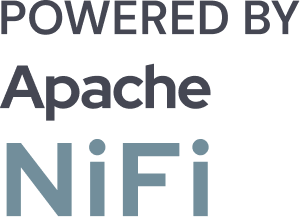Healthcare Data Integration: Using Apache NiFi to Unlock Real-Time Value from Patient Data
![]()
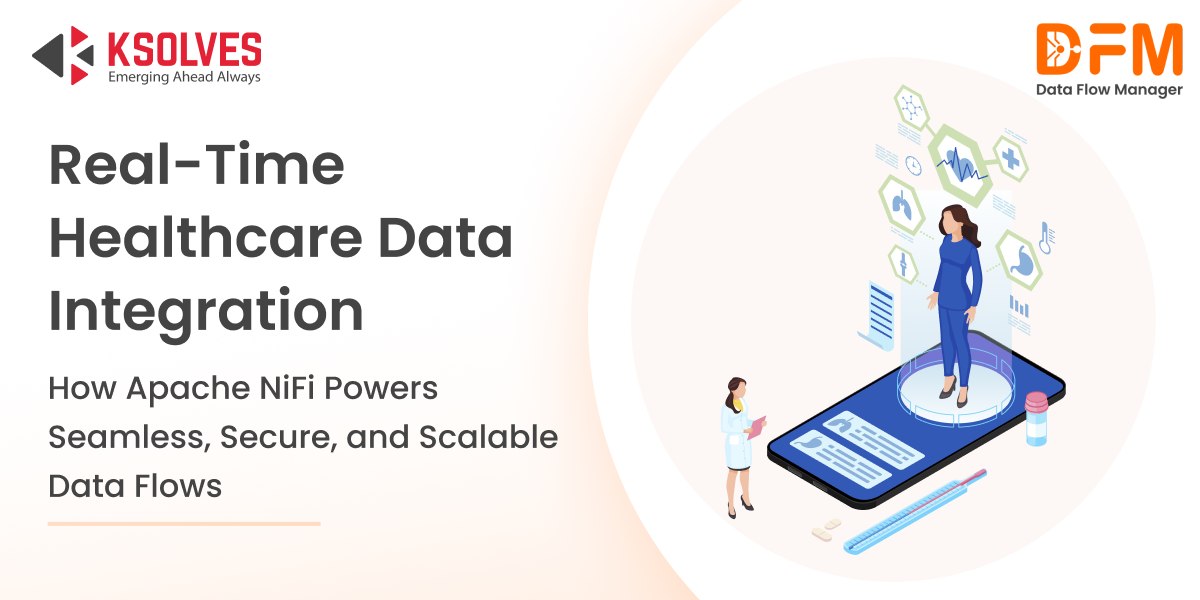
In modern healthcare, timely access to data isn’t just a technical advantage – it’s a clinical imperative. From patient monitoring systems and lab results to EHRs and connected devices, hospitals are generating vast amounts of information every second.
But without seamless integration, this data remains fragmented, delaying decisions and compromising care quality. Healthcare data integration bridges this gap by connecting diverse systems and delivering a unified, real-time view of patient information. It empowers clinicians to make faster, data-informed decisions, helps administrators streamline operations, and enables personalized care delivery at scale.
In this blog, we’ll explore how real-time data integration in healthcare is transforming clinical and operational outcomes. We will shed light on how Apache NiFi is enabling secure, scalable, and intelligent healthcare data flows.
What is Healthcare Data Integration?
Healthcare data integration is the process of aggregating and harmonizing data from multiple, often disparate, healthcare systems to create a unified, consistent view of patient and operational information.
These systems may include Electronic Health Records (EHRs), laboratory information systems (LIS), radiology and imaging systems, pharmacy systems, billing platforms, and connected health devices such as wearables and remote monitors.
A reliable healthcare data integration platform ensures that data can move seamlessly between these systems in real time or near-real time, regardless of their source or format. It also supports widely adopted healthcare interoperability standards, such as HL7, FHIR, DICOM, and X12, which are essential for enabling consistent communication between different applications, vendors, and healthcare providers.

Why Real-Time Data Integration in Healthcare Matters
In healthcare, every second counts. Whether it’s responding to a critical care alert or streamlining hospital operations, access to accurate, up-to-date information is essential.
Real-time data integration in healthcare ensures that clinicians, administrators, and systems operate with the most current data, enabling faster decisions, improved coordination, and safer outcomes.
Here’s how real-time integration transforms care delivery:
- Accelerated diagnosis and treatment: Clinicians can instantly access live patient data, such as lab results or vital signs, allowing them to respond without delay.
- Proactive remote monitoring: Data from connected devices and wearables can trigger real-time alerts, enabling early intervention before conditions escalate.
- Smarter resource management: Hospitals gain immediate visibility into bed occupancy, ER wait times, and staff availability, improving overall efficiency.
- Improved patient outcomes: Reduced data latency minimizes errors, prevents duplication, and ensures continuity of care across departments and systems.
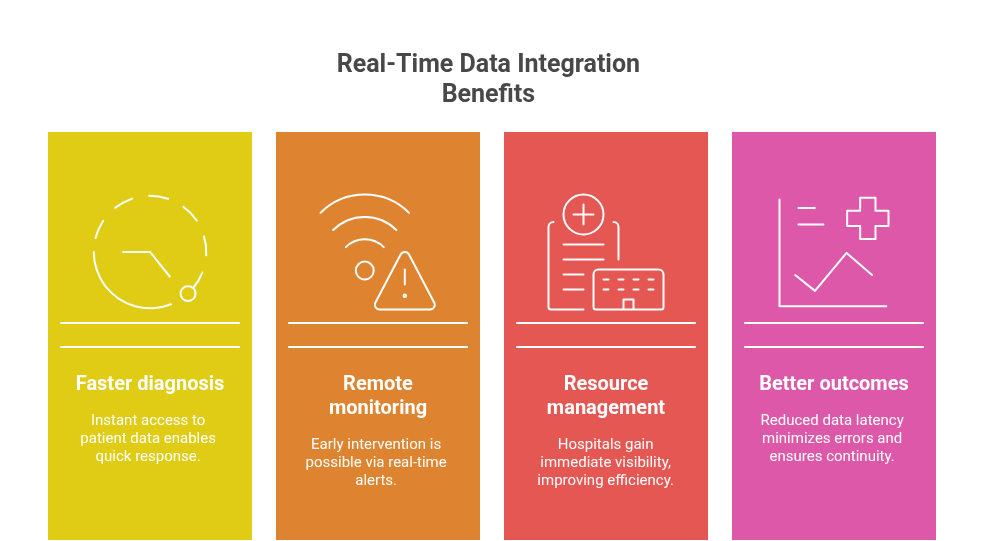
Read More– Apache NiFi and Data Flow Manager to Revolutionize Data Management in Healthcare
Understanding Healthcare Data Sources
Healthcare institutions work with a wide range of data sources, each with different structures and formats.
These include:
- EHR/EMR systems: Core patient records including medications, history, and diagnostics.
- Medical imaging systems: Radiology and cardiology images using DICOM standards.
- Lab information systems (LIS): Blood test results, cultures, pathology reports.
- Pharmacy systems: Medication dispensing data and prescriptions.
- IoT and wearables: Blood pressure monitors, glucose trackers, heart rate sensors.
- Insurance and billing systems: Claims, pre-authorizations, and financial data.
Integrating these healthcare data sources in real time ensures continuity of care, lowers administrative burden, and enhances the patient experience.
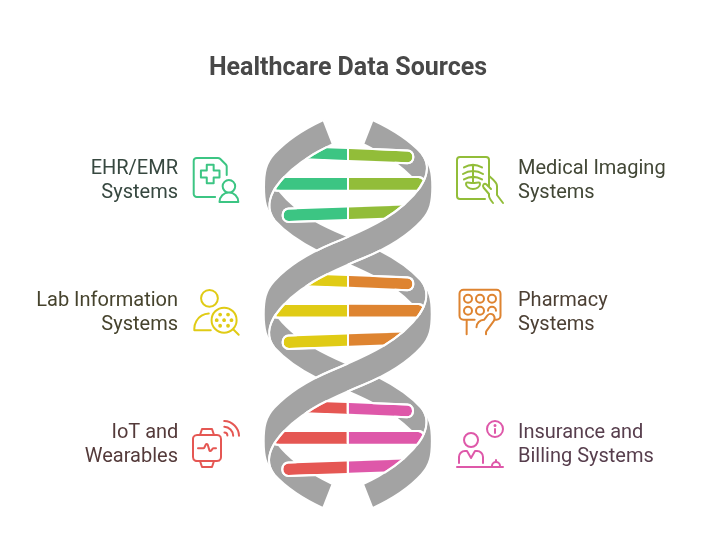
Key Challenges of Real-Time Data Integration in Healthcare
While real-time data integration has the potential to transform healthcare delivery, several persistent challenges continue to hinder its adoption and effectiveness. These issues span technical, operational, and regulatory domains, making integration a complex undertaking for many organizations.
1. Fragmented Systems and Data Silos
Hospitals and healthcare networks often use a mix of proprietary systems, EHRs, lab systems, and imaging platforms. These systems don’t natively communicate with each other. This fragmentation leads to isolated data and delayed access to critical information.
2. Legacy Infrastructure
Many healthcare institutions still rely on outdated, on-premise systems that were not designed for real-time data exchange. These systems are difficult to scale and integrate with modern, cloud-based platforms.
3. Inconsistent Interoperability Standards
Even with industry standards like HL7, FHIR, and DICOM, variations in implementation across vendors create incompatibility and require significant customization to ensure smooth integration.
4. Security and Compliance Risks
Real-time access to patient data increases the need for robust security and regulatory compliance. Meeting the requirements of HIPAA, GDPR, and other data privacy regulations adds layers of complexity to integration efforts.
5. Limited IT Resources
Many healthcare IT teams operate with limited bandwidth and tools. Developing, managing, and troubleshooting custom integrations across systems can strain already overburdened teams.
Apache NiFi: A Powerful Engine for Real-Time Healthcare Data Integration
Apache NiFi, an open-source dataflow automation platform, offers a modern, flexible alternative to the rigid, code-heavy legacy integration tools still found in many healthcare environments.
Designed for high-throughput environments, Apache NiFi enables healthcare organizations to automate and manage the flow of data between disparate systems with precision and reliability. In settings where data is fragmented across EHRs, lab systems, imaging platforms, and third-party applications, NiFi serves as the connective tissue, collecting, transforming, and routing information in real time.
Why Healthcare Institutions Should Choose NiFi Over Legacy Integration Platforms
Traditional healthcare integration solutions often involve custom scripts, point-to-point connections, and heavy manual intervention. This makes them brittle, costly, and slow to adapt. In contrast, Apache NiFi offers:
- Low-code dataflow creation through a drag-and-drop interface, reducing the dependency on specialized developers.
- Real-time and batch processing within the same framework, enabling both immediate alerts and long-term analytics.
- Dynamic scaling to handle large volumes of patient and clinical data with minimal configuration.
- End-to-end visibility with data lineage, audit trails, and flow monitoring, critical for compliance and troubleshooting.
- Native support for healthcare data formats and standards, including HL7, FHIR, JSON, XML, and more.
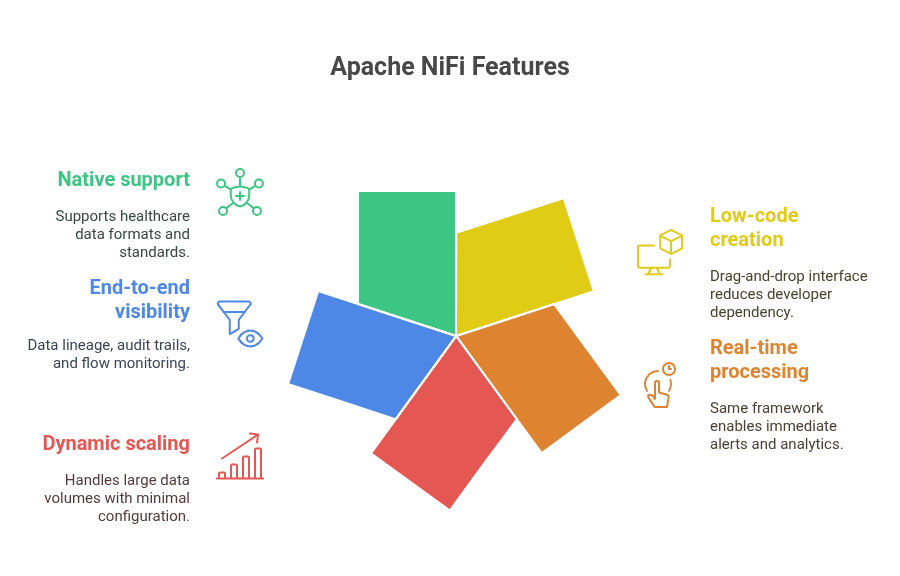
Key Benefits of Apache NiFi for Healthcare:
- Seamless interoperability with diverse data sources, EHRs, LIS, PACS, IoT devices, and mobile apps.
- Standards-based support for HL7, FHIR, DICOM, X12, and more.
- Low-code/no-code interface for designing, testing, and modifying flows without extensive coding.
- Granular security controls include SSL/TLS, role-based access, and data encryption.
- Data lineage tracking for full visibility into how data moves across the system, critical for HIPAA and GDPR compliance.
Simplifying NiFi Flow Management in Healthcare with Data Flow Manager
In Apache NiFi, data flows are the lifeblood of integration. These flows define how data is ingested, transformed, enriched, and routed across various healthcare systems, whether it’s moving lab results into an EHR, syncing wearable device data with a patient record, or sending HL7 messages to external systems.
However, in real-world healthcare environments, NiFi flows aren’t static. They evolve constantly due to:
- New data sources being onboarded
- Changes in regulations (e.g., HIPAA, GDPR)
- Workflow optimizations
- Security patches or protocol updates
This means healthcare IT teams must frequently deploy and promote updated flows from development to staging to production environments. Each promotion often involves manual intervention, exporting templates, reconfiguring controller services, validating connections, and troubleshooting errors.
For complex hospital networks or regional health systems, this process becomes time-consuming, error-prone, and operationally risky. Its impact on healthcare operations:
- Delayed data availability affecting clinical decisions.
- Increased burden on IT teams, reducing capacity for innovation.
- Higher risk of misconfigurations in production environments.
- Compliance challenges due to inconsistent deployment practices.
This is where Data Flow Manager (DFM) comes in.
DFM is a centralized, code-free platform to create, deploy, monitor, and govern NiFi flows, without writing a single line of code. It simplifies how healthcare organizations manage and promote NiFi flows across multiple environments.
With DFM, healthcare IT teams can:
- Promote flows with zero code: Automate flow deployment from dev to production in just a few minutes.
- Centralized controller services: Configure services across environments without switching between NiFi instances.
- Track version history and changes: Enabling easier flow rollbacks, audits, and compliance reporting.
- AI-Driven Flow Creation: Generating NiFi flows for common healthcare integration scenarios like EHR-to-LIS sync or HL7 to FHIR conversion.
Whether you’re deploying a new HL7 integration or updating a real-time patient monitoring pipeline, Data Flow Manager makes NiFi operations scalable, consistent, and stress-free.
Final Words
In a healthcare ecosystem where every second counts, real-time data integration is no longer optional – it’s foundational. By unifying diverse data sources and enabling seamless, standards-based communication, organizations can drive faster decisions, better patient outcomes, and more efficient operations.
Apache NiFi, combined with platforms like Data Flow Manager, offers a modern, scalable, and secure approach to healthcare data integration. For hospitals looking to move beyond legacy limitations, this powerful combination ensures your data flows as efficiently as your care.
Want to explore how Apache NiFi and Data Flow Manager can help your healthcare organization? Book your demo today!
![]()
